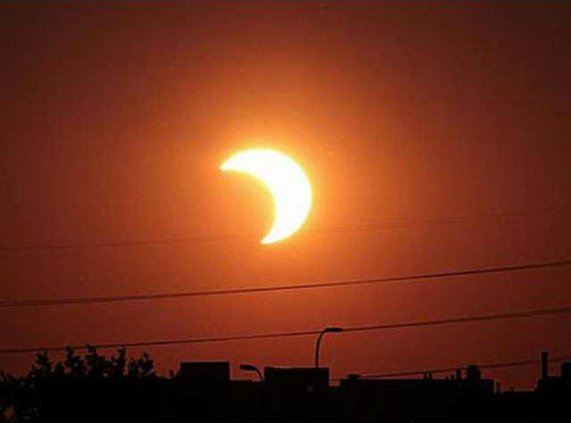Check out more about the equinox: bit.ly/1FKgHF0
AccuWeather reports that Friday the vernal equinox will occur, again marking the gradual return to warmer days in the Northern Hemisphere and winter's official astronomical end.
However, for 2015, the spring equinox will transpire amidst two other celestial events: a total solar eclipse (the eclipse occurred while Coastal Georgia was still in the dark) and a new supermoon.
"You could call it a cosmic coincidence," Slooh Observatory Manager Paul Cox said, adding that he will be traveling to the Faroe Islands as part of Slooh's expedition for the rare eclipse.
Slooh will be broadcasting the entire event live from the Faroe Islands, located in the northern Atlantic Ocean, which will serve as one of the best land-based locations for viewing the full effect of the eclipse as the moon slides in front of the sun.
"Nothing, and I mean absolutely nothing, in nature is as powerful and spectacular as the totality of a solar eclipse," Slooh Astronomer Bob Berman said.
"Sadly, they only happen every 360 years on average for any given location, which means that a very low percentage of the population has ever seen one."
While the total eclipse will only be visible from areas of the northern Atlantic Ocean, the farther north a person is located in Western Europe, the better visibility they will have, Cox said
For example, those living in northern Scotland can expect approximately 95 percent of the sun to be blocked during the eclipse, while those as far south as Rome, Italy, can expect more than 50 percent, he added.
Some people are even raising concerns about the eclipse's impact on power grids due to the sudden drop in solar power during the event, the Associated Press reported.
"Experts say the country's electricity grid, which relies increasingly on renewable energy, faces a crucial test on the morning of March 20, when the moon will pass in front of the sun and block up to 82 percent of its light across Germany," the Associated Press reported.
The eclipse will be partially visible for portions of Africa, eastern Europe and northern Russia as the Earth rotates.
Because the darkest part of the shadow, or umbra, will pass northward over the Atlantic Ocean and toward the North Pole, the Faroe Islands offers one of the only land-based spots on Earth to experience the eclipse's full effect. However, those at sea in the Atlantic could catch a better glimpse of the rare celestial event.
The beautiful Blue Planet we call home travels an elliptical orbit at a 23.5 degree tilt, or obliquity, from the sun which is responsible for the change in seasons.
This is marked twice each year by an equinox and twice by a solstice.
"The vernal equinox is when the most direct rays of the sun are directed on the equator," AccuWeather.com Senior Meteorologist Dan Kowlottski said.
Continuing through the spring and into summer, daylight builds in the Northern Hemisphere with the sun's direct rays moving farther north of the equator until the summer solstice, the day with the longest duration of sunlight in the entire year, occurs.
In addition to the vernal equinox and the eclipse, a new supermoon will also occur Friday. The supermoon is either a full moon or a new moon that occurs during the moon's closest approach to Earth on its elliptical orbit.
This proximity results in the appearance of a larger lunar disk, around 15 percent larger, during a full supermoon as seen from the planet.
With the solar eclipse happening simultaneously with a new supermoon, astronomers will be able to view the new moon's silhouette, something that is normally impossible, Cox said.
"It gives us the ability to see a rare supermoon," Cox said. "This is the one opportunity to see a truly new moon."
It will also provide a slightly longer time window, a little more than two minutes, for Cox's team to catch the totality of the eclipse for their broadcast, he added.
While a supermoon and solar eclipse occurring together is a rather rare celestial event, the coupling of a solar eclipse and the vernal equinox is not as rare, Cox said.
"It's cyclical," he said. "There are usually four or five together [over a period of 19 years]."
The first occurrence of another solar eclipse during the vernal equinox will be seen after a 19-year interval from Friday's event (in 2034), followed by another in 2053 and a third of these grouped events in 2072.
The next series of solar eclipses transpiring on the day of the vernal equinox will not happen again for more than a century following 2072's eclipse.
Those seeking to watch the eclipse should exercise caution and not look directly at the sun.
Those who plan on viewing the event directly should use protective eclipse glasses or build a safe viewing device.

